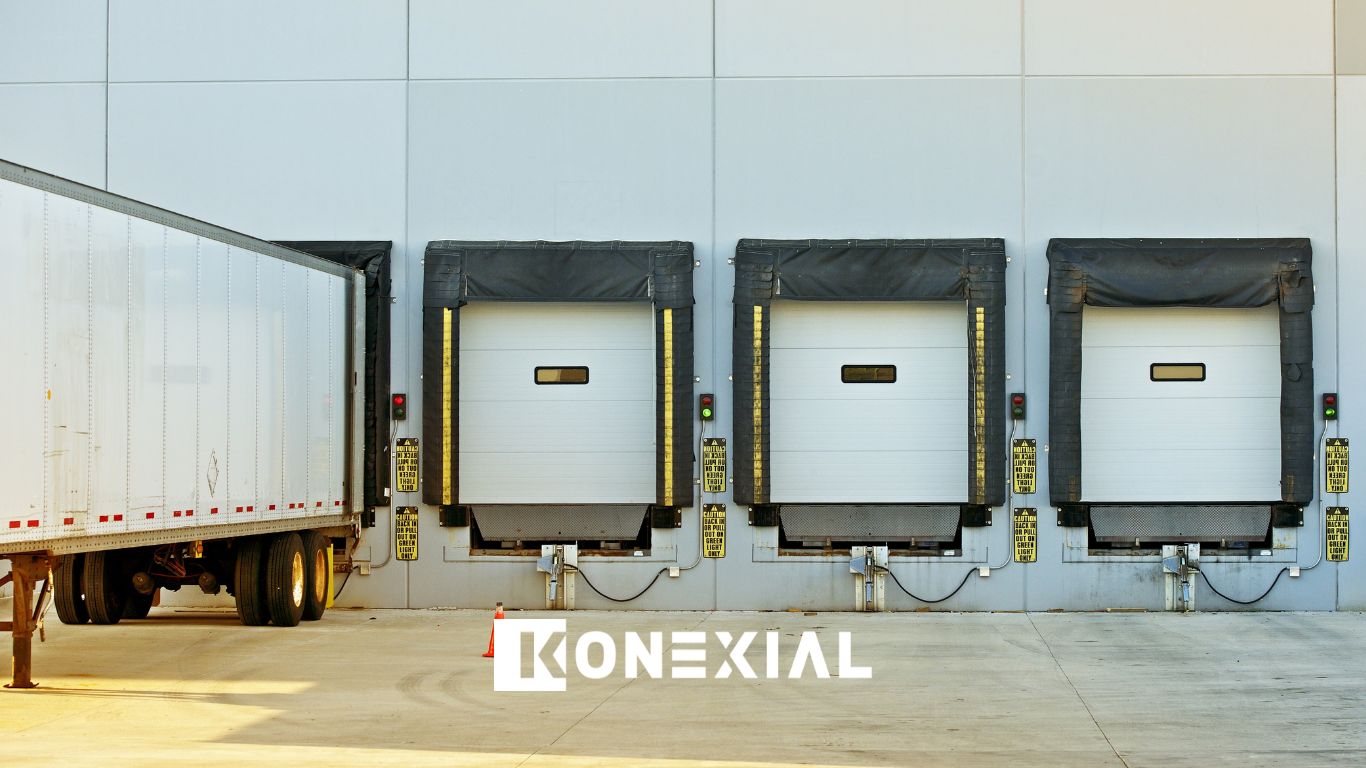5 Strategies for Overcoming a Freight Recession

5 Strategies for Overcoming a Freight Recession
In recent times, the freight and logistics industry has faced its fair share of turbulence, marked by what many refer to as a “freight recession.” This period of economic slowdown has left businesses scrambling to find solid ground amidst declining shipment volumes, fluctuating demand, and an overall atmosphere of uncertainty. If you are seeking strategies to navigate through these bumpy roads, you’re not alone.
This blog aims to shed light on the current state of the freight recession, particularly within the US, and offers practical, actionable strategies for those in the thick of it. From understanding the nuances of the trucking freight recession to exploring ways to come out on top, we’ve tailored our insights to help your business not just survive, but thrive.
Join us to explore the current freight recession and equip you with the knowledge and tools you need to steer your way through this challenging time.
Current State of the Freight Industry
The “US freight recession” refers to a period of economic downturn specifically affecting the freight industry within the United States. Several factors contribute to this phenomenon, including both domestic and global economic conditions, shifts in consumer behavior, and industry-specific challenges. Here’s are a few specific challenges and trends within the United States contributing to a freight recession:
Economic Slowdown: Economic contractions or slowdowns can significantly impact freight demand. When businesses and consumers cut back on spending, there’s a decrease in the transportation of goods. Factors such as trade tensions, uncertainty in global markets, or domestic policy changes can exacerbate economic slowdowns, leading to reduced freight activity.
Manufacturing Decline: The manufacturing sector plays a crucial role in freight transportation, as goods need to be transported from production facilities to distribution centers and retailers. Any decline in manufacturing activity, whether due to decreased consumer demand, supply chain disruptions, or increased automation, can lead to a reduction in freight volumes.
Trade Policy Uncertainty: Trade policies, including tariffs and trade agreements, can have a significant impact on freight transportation. Uncertainty surrounding trade negotiations or the imposition of tariffs can disrupt supply chains, leading to fluctuations in freight demand and shipping patterns.
Shifts in Consumer Behavior: Changes in consumer preferences, such as the rise of e-commerce and direct-to-consumer shipping, have transformed the freight industry. Traditional brick-and-mortar retail is facing challenges, while demand for last-mile delivery services has surged. Adapting to these shifts requires adjustments in logistics and transportation networks, which can create temporary disruptions in freight activity.
Technological Disruptions: Technological advancements, such as automation, artificial intelligence, and blockchain, are reshaping the freight industry. While these innovations offer opportunities for increased efficiency and cost savings, they also require significant investments and adjustments in infrastructure and operations, which can impact short-term freight activity.
Regulatory Changes: Regulatory changes, including environmental regulations, safety standards, and labor laws, can affect the cost structure and operations of freight companies. Compliance with new regulations may require investments in equipment, training, or infrastructure, which can impact profitability and freight volumes.
Infrastructure Challenges: Aging infrastructure, congestion, and capacity constraints in transportation networks can hinder the efficient movement of freight. Delays in infrastructure investment or inadequate maintenance can exacerbate these challenges, leading to increased costs and disruptions for freight operators.
Environmental Concerns: Growing awareness of environmental issues, such as carbon emissions and sustainability, is influencing freight transportation practices. Shifting towards greener technologies and practices, such as alternative fuels and electric vehicles, can entail upfront costs and logistical challenges for freight companies.
Beginning in 2023, high inventories and a decrease in consumer spending caused the industry to see the beginnings of a freight recession. This along with the low freight rates continuing into 2024 have severely impacted many trucking companies and operations. According to Tank Transport, rising fuel costs and falling freight rates caused a total of 31,278 trucking companies to either close or shift their services to larger fleets. Adapting to these challenges requires resilience, innovation, and strategic planning within the freight industry and across related sectors of the economy.
Understanding a Freight Recession
The state of the global economy significantly impacts freight markets. During economic downturns, such as recessions, consumer demand typically decreases, leading to reduced freight volumes. Conversely, during periods of economic growth, increased consumer spending and manufacturing activity usually drive up freight demand. Therefore, monitoring key economic indicators like GDP growth, consumer spending, and industrial production can provide insights into the health of the freight market.
Fuel costs, particularly for diesel, are a significant expense for freight transportation companies. When fuel prices rise, operating costs increase, putting pressure on profit margins. This can lead to adjustments in freight rates or operational strategies. When fuel prices decrease we see companies benefiting and reducing operating expenses. Fluctuations in fuel prices are influenced by various factors, including geopolitical tensions, supply and demand dynamics, and government policies.
Regulatory changes, both domestically and internationally, can also impact the freight market. For example, stricter emissions standards may require companies to invest in more fuel-efficient vehicles or alternative propulsion technologies, affecting their operating costs. Additionally, changes in trade policies, such as tariffs or trade agreements, can alter the flow of goods and impact freight volumes between countries.
Advances in fleet technology, such as automation, artificial intelligence, and data analytics, are transforming the freight industry. These technologies can improve efficiency, reduce costs, and optimize supply chain operations. However, they can also disrupt traditional business models and require companies to adapt to remain competitive.
Events such as natural disasters, geopolitical conflicts, or pandemics can disrupt global supply chains and cause fluctuations in freight demand. For example, the COVID-19 pandemic led to disruptions in manufacturing, trade, and consumer spending, affecting freight volumes across various industries.
5 Strategies to Overcoming a Trucking Freight Recession
Trucking companies facing a freight recession can employ several strategies to mitigate its impact and maintain their competitiveness:
Diversify Services and Freight Hauled: Trucking companies can mitigate the impact of a freight recession by diversifying their services and exploring new markets. Look into industries that may have different transportation needs from your current clients. For instance, if you primarily haul consumer goods, consider branching into industries like agriculture, construction, healthcare, or automotive. Offer additional services beyond standard freight hauling, such as refrigerated transport for perishable goods, flatbed hauling for oversized cargo, or specialized handling for hazardous materials. This allows you to cater to a broader range of clients with diverse needs.
Invest in Technology: Investing in technology and innovation can help trucking companies improve efficiency, reduce costs, and allow for better tracking and management of shipments. This could include adopting telematics systems for fleet management, implementing route optimization software to minimize fuel consumption and idle time, or deploying automated systems for freight tracking and documentation. Additionally, adopting electronic logging devices (ELDs) and mobile apps can streamline communication, paperwork, and payment processes, improving overall efficiency and customer service.
Establish Partnerships and Collaborations: Establish partnerships with other companies in related industries to offer bundled services or tap into their customer base. Collaborating with suppliers, manufacturers, or retailers can create opportunities for mutually beneficial arrangements.
Optimize Routes: Optimizing routes and minimizing empty runs are essential strategies for maximizing efficiency and profitability, especially during a freight recession. Trucking companies can use route optimization software to plan more fuel-efficient routes, minimize detours and idle time, and reduce overall transportation costs. Additionally, trucking companies can minimize empty miles by strategically planning backhauls, collaborating with other carriers for freight consolidation, or leveraging digital freight matching platforms to find return loads.
Optimize Fuel Consumption: Fuel costs accounted for a significant portion of operational expenses in 2023, rising by 53.7 percent to 64.1 cents per mile. Managing fuel consumption and minimizing empty runs are essential strategies for maximizing efficiency and profitability, especially during a freight recession. Implementing fuel management systems and practices, such as driver training on fuel-efficient driving techniques and regular maintenance of vehicles, can further reduce fuel expenses.
By implementing these strategies, trucking companies can better navigate the challenges posed by a freight recession and position themselves for long-term success in the ever-evolving transportation industry.
Freight Recession Predictions and Preparations
Predicting the exact end date of a freight recession is challenging, as it depends on numerous factors, including economic conditions, global trade dynamics, regulatory changes, and unforeseen events. However, industry experts and analysts may offer insights and forecasts based on trends and indicators in the freight market:
Industry experts often monitor key indicators such as GDP growth, consumer spending, industrial production, and freight volumes to gauge the health of the freight market and predict trends. They may also consider factors like fuel prices, regulatory developments, and geopolitical tensions. While forecasts can vary, experts may provide projections based on their analysis of these factors. Additionally, organizations such as trade associations, research firms, and financial institutions may publish reports and forecasts on the freight market outlook.
As the freight recession begins to ease, trucking companies can prepare for the post-recession period by implementing strategies for growth and recovery. This may include investing in fleet expansion or modernization, expanding into new markets or service offerings, strengthening customer relationships, and optimizing operational efficiency. By positioning themselves strategically and capitalizing on emerging opportunities, trucking companies can accelerate their recovery and regain momentum in the post-recession landscape.
In planning for the future, agility and flexibility are crucial for adapting to changing market conditions and seizing opportunities as they arise. Trucking companies should maintain a nimble approach to operations, allowing them to adjust quickly to shifts in demand, regulatory requirements, and competitive dynamics. This may involve embracing technology to improve operational efficiency, fostering a culture of innovation and continuous improvement, and cultivating a network of reliable partners and suppliers. By remaining agile and flexible, trucking companies can navigate uncertainty more effectively and position themselves for long-term success in the dynamic freight industry.
Overall, while the exact timing of the end of a freight recession may be uncertain, trucking companies can prepare for the post-recession period by staying informed, implementing proactive strategies, and maintaining agility and flexibility in their operations. By doing so, they can maximize their resilience and capitalize on opportunities for growth and recovery in the evolving freight market.







